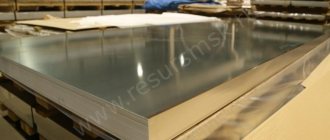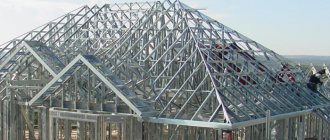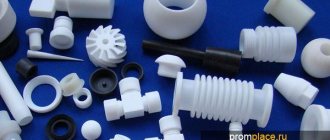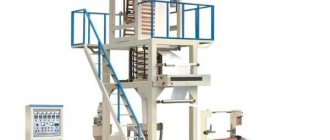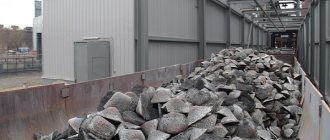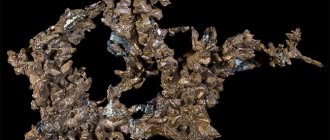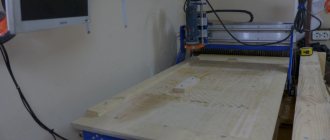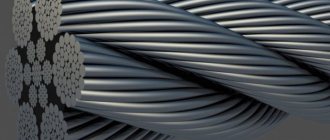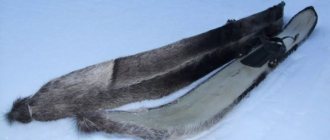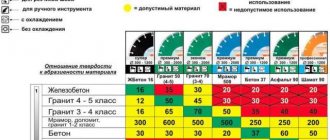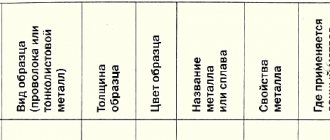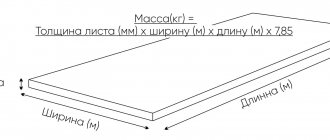Application for product/service
Corrugated aluminum sheet is a popular type of aluminum sheet, rolled with a rectangular cross-section and a convex pattern on the surface, consisting of corrugations. The relief pattern (ribbles) is located at a certain angle to each other. Corrugated aluminum sheets are used in the automotive industry, many industries and the national economy. Corrugation gives aluminum sheets a decorative effect and provides an anti-slip effect.
The price of aluminum corrugated sheet depends on its dimensions, thickness and brand of alloy used. Produced in accordance with GOST 21631 – 76, TU 1-801-17-2008 and TU 1-801-20-2008.
Depending on the type of corrugation (number of corrugations), sheets are distinguished: duet, lentil, quintet . Most often, the design is applied to only one side of the aluminum corrugated sheet; rolled products with double-sided corrugation are delivered upon pre-order.
Dimensions and weight of corrugated aluminum sheet
Sheet thickness excluding the height of the convexities: 1.2; 1.5; 2; 2.5; 3; 4 millimeters. There are corrugated aluminum sheets with a thickness of 5 millimeters.
The standard size of corrugated aluminum sheet is 1.2×3.0; 1.5x3.0 meters. By ordering a cutting service, you can buy corrugated aluminum in the sizes you require.
The weight of a corrugated aluminum sheet depends not only on its size, but also on the grade of the alloy. For example, the weight of rolled aluminum metal with dimensions of 1.5 × 1200 × 3000 millimeters: AMG2 - 16.15 kg, and VD1 - 15.26 kg. One of the most popular is aluminum corrugated sheet 2 mm. You can buy rolled aluminum AMg2N2 in sizes 1200×3000 and 1500×3000, the weight of the sheets will be 21.07 and 23.34 kg. And the weight of a 4 mm sheet, cut to 1500×3000 mm, is 45.52 kg.
Aluminum sheet with corrugation
Aluminum is a lightweight, corrosion-resistant metal that has gained popularity in households and industrial production.
Physical properties of metal:
- density - 2.7 g/cm3;
- plastic;
- resistivity 0.027 Ohm • mm2/m;
- thermal conductivity 203.5 W/m • K;
- melting point 660ºС.
Due to their light weight, aluminum sheets are preferable to rolled steel in reconstructed and repaired buildings, since aluminum puts less load on foundations and other supporting structures.
Plasticity and low melting point make it possible to easily process metal and give products complex shapes. The lack of brittleness at ultra-low temperatures has expanded the field of application to cryogenic technology.
In industries associated with the formation of flammable and explosive gases, aluminum is used as a spark-proof material in the construction of floors, panels, and enclosures of lifting and transport equipment cabins.
Aluminum's ability to conduct heat is 3 times higher than that of steel; it is widely used in heat exchangers with high and low temperatures, as well as kitchen utensils and air conditioners.
Its electrical conductivity is less than that of copper, but due to its lower specific gravity it conducts 2 times more electricity than copper wire with equal weights. This characteristic is used in conductors, transformers, and high-voltage power lines.
Alloys with other metals
Perhaps the only negative quality of aluminum is its low strength, but modern metallurgy has found a way to overcome this characteristic: alloys with copper, magnesium, manganese, chromium, silicon, and other metals are comparable in strength to some types of steel.
An oxide film forms on the surface of aluminum products. Thanks to it, the metal exhibits unique anti-corrosion qualities. In combination with nickel and iron, the protection weakens; in combination with manganese, it increases. Corrosion resistance expands the possibility of using aluminum structures and products in the chemical industry and transportation of aggressive liquids. Contact with halogens, chlorine and bromine, weak nitric acid, alkalis, mercury leads to the destruction of oxide protection.
The presence of a protective film complicates welding; it is performed with tungsten electrodes, and the procedure itself is carried out in an inert gas environment.
Aluminum does not form compounds harmful to human health, does not participate in the metabolism of warm-blooded creatures, and therefore is widely used in the manufacture of packaging for long-term storage of food products.
Pure aluminum has low strength and is plastic; alloys are used in almost all areas of production and everyday life, and sheets of alloys are corrugated - a three-dimensional pattern is applied, which makes them anti-slip and decorative.
Advantages and characteristics of corrugated aluminum
Operational and physical-chemical characteristics that determine the popularity of this type of rolled aluminum:
— high resistance to corrosion;
- light weight;
— long service life;
— relief pattern that prevents slipping even on a wet surface;
— presentable appearance;
— environmental safety of the product;
— resistance to many aggressive factors of the operating environment;
— affordable price of corrugated aluminum.
The most common brands you can buy are: AMg2N2, 1105ANr, AMg2Nr, and AMg3N2. The letter H indicates that the alloy is hard-worked. This material is more durable and hard. There are several types of cold-working: semi-hard-working (H2), cold-working (H), one-third cold-working (H3) and one-quarter cold-working (H4). Cold-worked sheets (H) have the greatest strength. The letter P is added to the marking of products obtained by cold rolling.
If you need to additionally process the product using bending, welding, and the product will be used outdoors, it is better for you to buy AMG2N2R (semi-hardened corrugated steel) or AMG2NR (cold-cold rolled steel). When used indoors, on a flat surface without distortion, the cheaper imported analogue GALAXY is also suitable.
Description and production standards
Metal sheets serve as decorative elements for furniture or pedestals; designers widely use this material.
The corrugated sheet is made from an alloy of aluminum, duralumin, and additionally copper and magnesium are added to its composition . The alloy is manufactured according to the requirements of GOST 21631–76. The rolled metal is made in the shape of a rectangle. The alloy undergoes a hardening process, the result is acquired strength and hardness, which are 7 times higher in comparison with the normal state of the metal.
The weight of the finished duralumin product is several times reduced in comparison with iron. This quality of aluminum makes it in demand in many industries and areas of human activity.
An aluminum alloy with additives makes it easy to apply a decorative or protective coating to the workpiece.
The aluminum billet gets its name because of its pattern, which is applied in the form of alternating strokes or stripes at a strict angle. The demand for aluminum corrugated sheet is due to the presence of corrugations and a wide range of applications.
The corrugated sheet has several variants of patterns applied to its surface. The strokes are applied and alternated in a checkerboard pattern.
- Diamond or diamond. The pattern is applied with a single protrusion and resembles the shape of a diamond.
- Duet. The drawing is applied in pairs, in the form of two strokes.
- Aluminum sheet corrugated Quintet. The drawing consists of five strokes applied parallel to each other.
Corrugated aluminum is produced in several grades, the most common alloys are::
- Alloy of aluminum and 2% magnesium (not exceeding 4%) AMr2. A ductile and durable alloy that can be joined by welding. It is resistant to corrosion. The alloy was manufactured in accordance with GOST 4784–97.
- Aluminum alloy with manganese added no more than 1.5%, AMn. The composition of the metal product due to its properties does not have sufficient strength, but is resistant to corrosion and very ductile. Manufactured in accordance with GOST 4784–97.
- An aluminum alloy with the addition of copper from 2 to 5% and magnesium from 0.4 to 1.6% is called VD1. This product is characterized by high strength and ductility. The material can easily be treated with an anti-corrosion coating if necessary. Manufacturing is carried out in accordance with GOST 1131–76.
Sheets are available in two sizes: 1200*3000 mm and 1500*3000 mm. This sheet size is considered universal, however, if necessary and the availability of the manufacturer’s production capacity, the dimensions can increase and range from 4 to 6 meters. The manufacturer can reduce the sheet size to 2 or 2.5 meters.
The thickness of the product varies and ranges from 1.2 to 5 mm.
The weight of the product ranges from 15 to 40 kg.
Application of Aluminum Corrugated Sheet
Corrugated aluminum is an extremely popular and sought-after metal product that can be used everywhere. Among the areas of application of corrugated aluminum sheets are construction, production sites (including stairs, flights of stairs, passages, etc.), automotive and instrument making, agriculture, aircraft manufacturing and many others.
Due to their high resistance to corrosion, aluminum corrugated sheets can be used both outside and indoors, used as a finishing material and floor coverings. Very often, corrugated aluminum is used for lining refrigerated vans and car vans. In the food industry, corrugated aluminum is used for flooring.
The main function that makes corrugated aluminum so popular is the formation of an anti-slip coating. But today, very often, corrugated aluminum sheets are used for decorative purposes, for example, for tuning cars, motorboats, boats and other vehicles, as decorative elements. You can’t do without corrugated aluminum in the production of refrigeration rooms, installations, as well as many household appliances.
Supplier: LLC RTG "MetPromStar"
Treatment
There are different types of processing:
- Thermal or its absence, products without heat treatment do not have a marker; heat-treated (or annealed) sheets receive the letter “M” in the brand. The entire range of aluminum grades, except VD1, can be annealed.
- The annealing procedure is used to eliminate excess strength of the sheet, which it may acquire during processing.
- cold-worked (H) - with an outer layer compacted by special machines or shot peening;
- semi-hardened (H2) - with a lower degree of compaction;
Cold-worked or semi-hardened metal under the influence of high pressure in a low-temperature environment is strengthened with a partial loss of ductility. At higher pressures, a high degree of hardening is achieved.
Products made from cold-worked material cannot be welded or bent due to the possibility of cracks, but they are used in high-strength building structures.
Semi-hardened sheets are welded and bent.
Hardening and aging
Tempering gives corrugated aluminum sheets additional tensile strength. The technology consists of sudden cooling after high-temperature exposure:
- a hardened and naturally aged sheet receives the letter “T”, the natural aging process takes 4-5 days without heat treatment;
- hardened and artificially aged - “T1”, aging is forced, at t = 150ºC for several hours;
- cold-worked after hardening and artificial aging - “TN”.
Surface finish quality
Corrugated aluminum sheet may have:
- high finish with the designation “B”;
- increased finishing - “P”;
- regular trim that is not marked.
High finishing involves the use of A7 grade aluminum as a raw material for the production of corrugated sheets; A6; A0; AD00; AD0; AD1; HELL; AMts grade alloys; AMg2. Advanced and regular finishes do not have requirements for the grade of metal or alloy.
The surface texture of the sheet can be glossy or matte.
This is interesting: Anchor bolt: types, application and installation features
Production methods
Aluminum sheets having a corrugated cross-section profile are produced using hot or cold rolling. In this case, corrugated sheets, the thickness of which is 3–4 mm, are made by hot rolling, and products with a smaller thickness are made using cold technology.
All such products, regardless of what type of corrugation needs to be applied to their surface, are produced according to the following technological scheme.
- Quite massive ingots are made from aluminum alloy, weighing 2–3 tons.
- Various preparatory operations are carried out with ingots.
- The resulting billets are subjected to hot rolling, which can be followed by cold rolling if necessary.
- Then the corrugated sheets are subjected to heat treatment and finishing operations, the technology of which depends mainly on what type of aluminum alloy was used for their manufacture.
An excellent, detailed video about all the nuances of the production of rolled aluminum sheets.
According to the technical specifications (TU), additional technological operations can be used for certain types of aluminum corrugated sheets. In particular, technical conditions have been specially developed for the production of aluminum sheets, on the surface of which “lentil” corrugation is applied. It is quite easy to determine the type of such corrugation even from a photo: its elements have a pronounced diamond-shaped configuration.
For the production of aluminum sheets with corrugation, the following grades of alloys of this metal are most often used: AMts and AMg. The preference of these alloys as a material for corrugated sheets is due to their high resistance to corrosion, which allows the successful use of products made from them in cases where they are exposed to high humidity and other aggressive environments.
Characteristics of aluminum wrought alloy grade AMts
Additional advantages of using aluminum alloys belonging to the AMts category are:
- good ductility, which greatly facilitates the processing of such materials by plastic deformation methods;
- good weldability ensured by the use of aluminum electrodes;
- light weight;
- decent mechanical characteristics.
Meanwhile, it should be borne in mind that aluminum alloys containing manganese cannot be subjected to heat treatment, which could improve their mechanical properties. Products made from these alloys are subjected to a technological operation such as cold hardening, which, although it reduces the plasticity of the material, can significantly increase its hardness.
Standard requirements
Rolled aluminum sheets with a corrugated cross-section profile, as specified in GOST 21631-76, are produced in the form of rectangular-shaped products, on which protrusions are specially applied, located at an angle to each other and forming a specific pattern. Such protrusions, as well as the very low weight of sheet aluminum, are precisely the most significant features of such a material.
You can familiarize yourself with the GOST requirements for sheet aluminum by downloading the document in pdf format from the link below.
The projections formed on the surface of the aluminum sheet are called corrugations. The corrugated surface consists of groups of adjacent protrusions formed from varying numbers of corrugations. Thus, a sheet whose corrugated surface is formed from groups of protrusions, each of which contains five corrugations, is an aluminum sheet quintet, two corrugations are a duet, one is a diamond. It is not difficult to distinguish sheets with different types of corrugation; to do this, just look at the photo of the product.
Types of corrugation of aluminum sheet
GOST specifies the basic geometric parameters of corrugated aluminum sheets:
- length of finished sheets – 200–600 cm;
- width of sheet products – 100–150 cm;
- thickness of rolled aluminum sheets – 1.5–4 mm (it should be borne in mind that this parameter does not include the height to which the corrugations rise above the sheet).
Production methods
In addition to additional alloying additives, steel is classified by production methods . Corrugated aluminum can be produced by hot or cold rolling with or without cladding.
Hot rolled
Hot rolling is carried out in several stages .
Alloys are cast into ingots. The ingot is placed in a shaft furnace for subsequent melting and obtaining a liquid metal structure. The liquid alloy is rolled out using high pressure and cylindrical shafts, and at the same time the riffles are applied.
The whole process takes place at high temperatures, due to which the sheet acquires excellent ductility, but loses strength.
